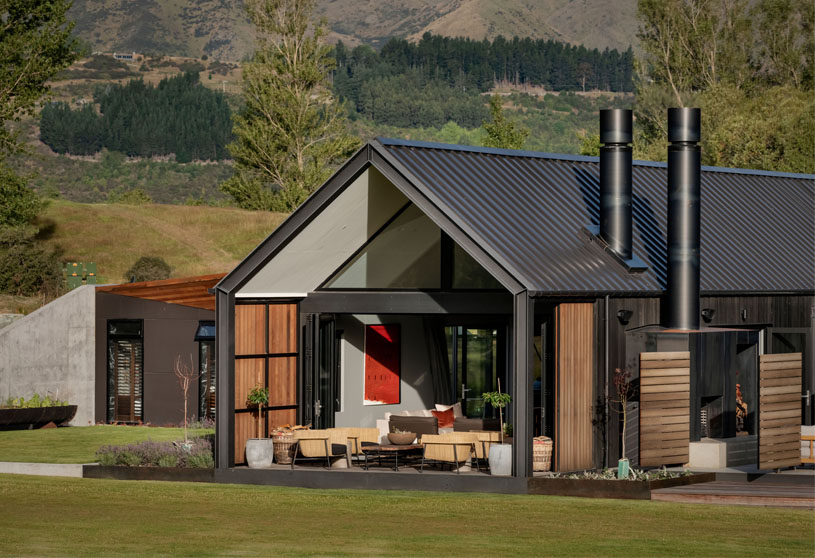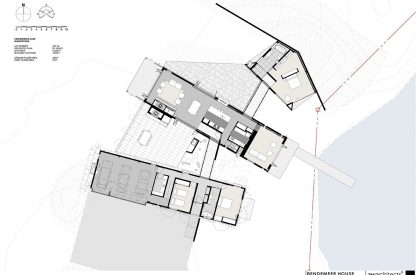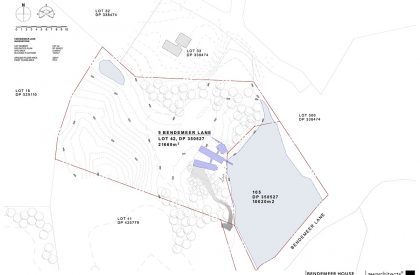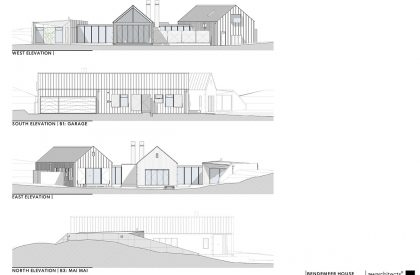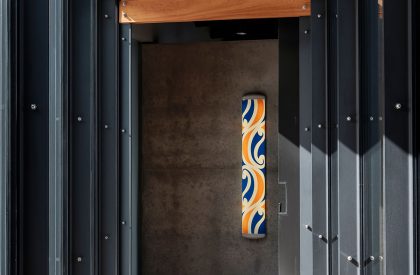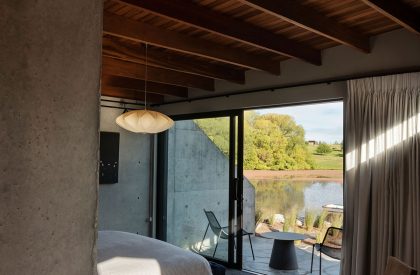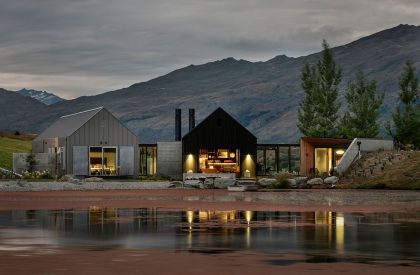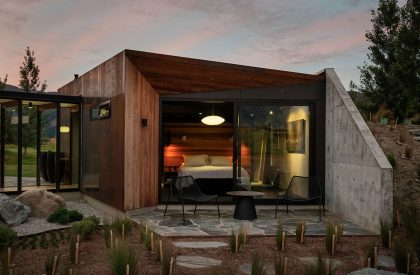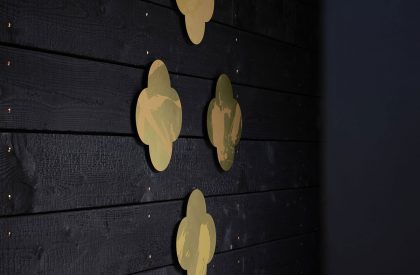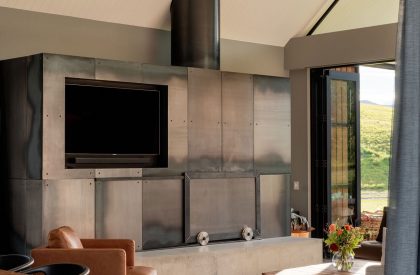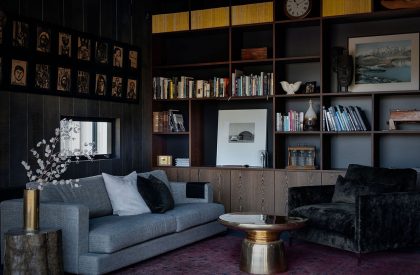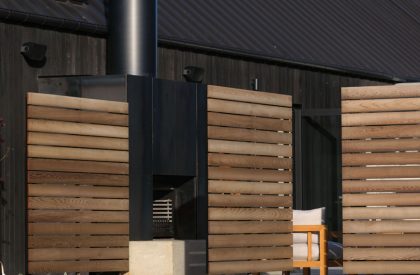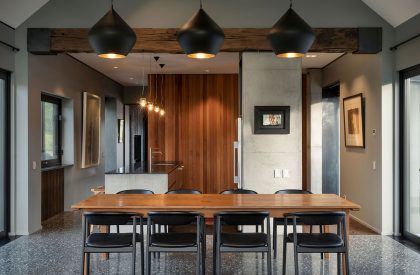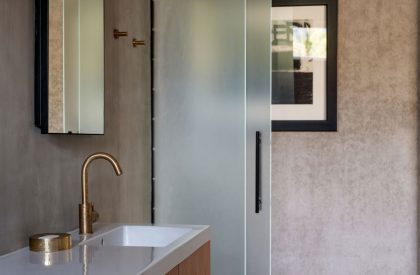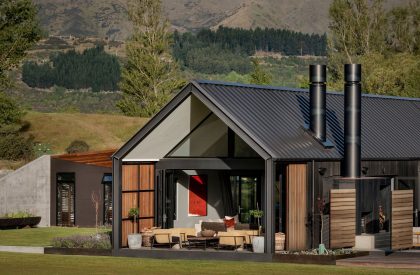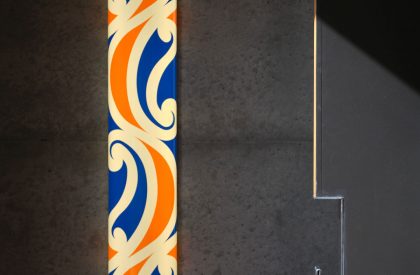Excerpt: Lake House is a residence designed by an architectural and interior design firm AW Architects. The dwelling consists of three pavilions connected via linkways, reflecting clusters of farm buildings as found throughout the district. Two larger gable forms mirror the alpine environment, while the minor Mai Mai form is bunkered down into the landscape. The entry pavilion houses a garage and guest accommodation. The second pavilion contains the main living spaces, while a third lakeside pavilion contains a master suite. This arrangement accommodates a couple living between the main house and Mai Mai, while the garage pavilion will be ‘switched on’ for family and guests.
Project Description
[Text as submitted by Architect] Three separate pods organised in a clear, geometrical form are oriented to the lake and connected by a glazed passage, which creates a set of courtyards. These spaces, responsive to sun and wind, invite occupation throughout the seasons at any time of day. The central pod contains the living activities of the family, a second pod accommodates guest bedrooms and garages, and the third is the owners’ bedroom. A robust palette of natural cladding materials and quirky details enlivens the exterior.
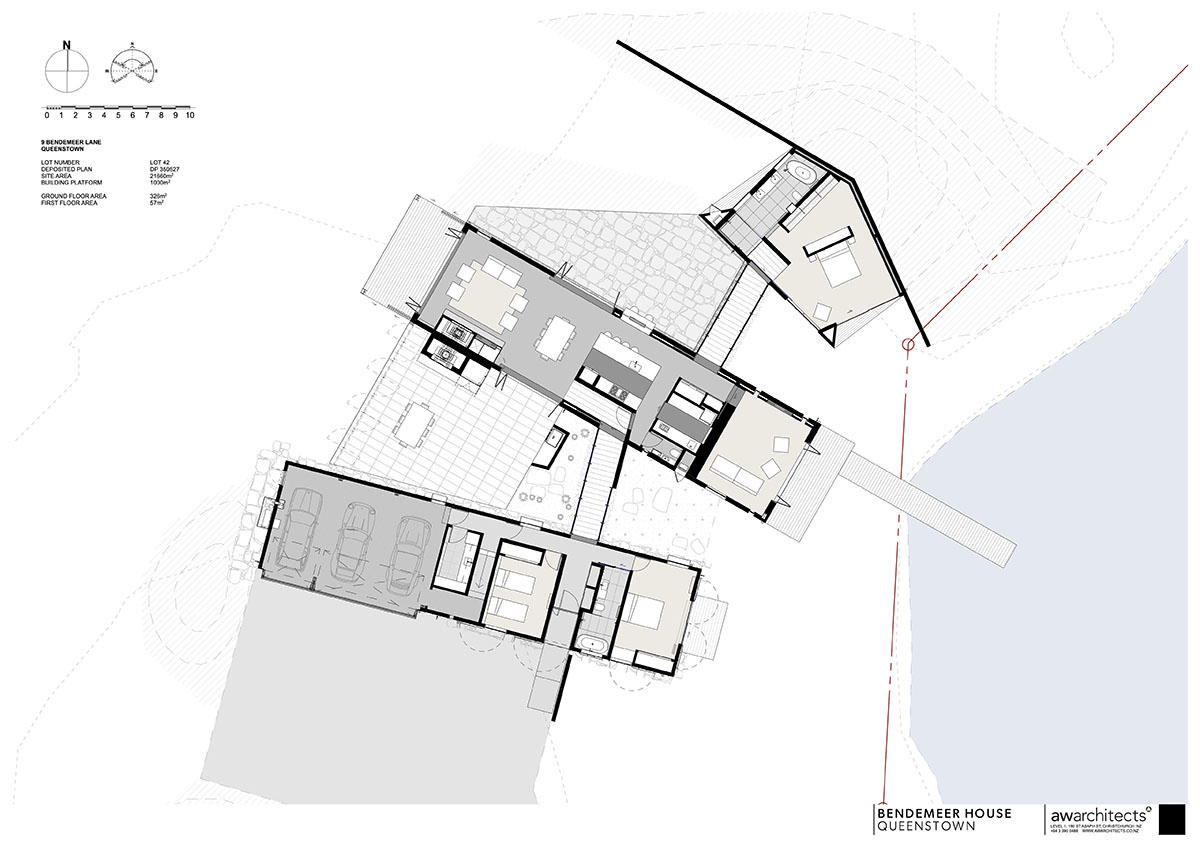
It is a surrounding mountain environment with natural mounds and hollows and a pond on the site. “The area is on a Roche moutonnee landform with a hummocky undulating character expressive of its ice sculpted, glacial formation. Large pond to the east with an associated wetland area.
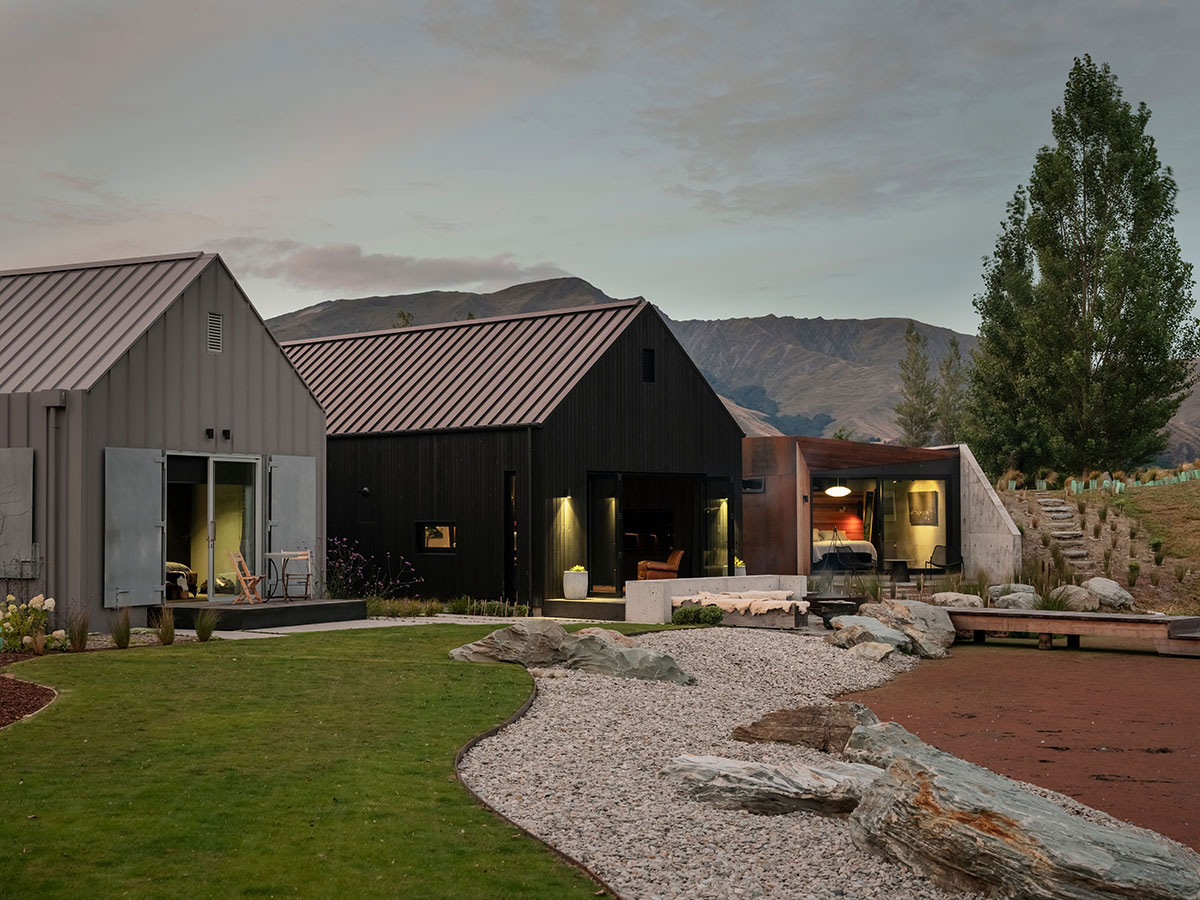
The dwelling consists of three pavilions connected via linkways, reflecting clusters of farm buildings as found throughout the district. Two larger gable forms mirror the alpine environment, while the minor Mai Mai form is bunkered down into the landscape.
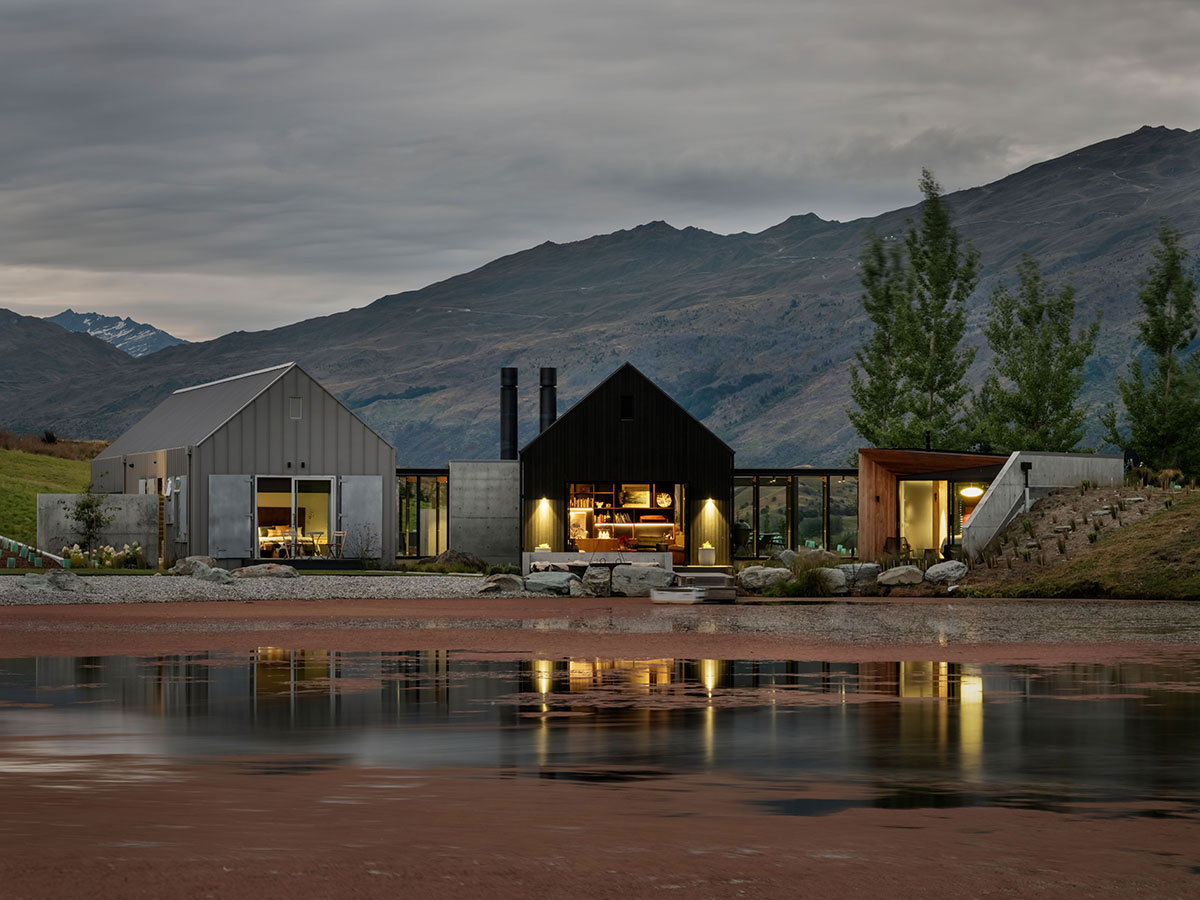
The entry pavilion houses a garage and guest accommodation. The second pavilion contains the main living spaces, while a third lakeside pavilion contains a master suite. This arrangement accommodates a couple living between the main house and Mai Mai, while the garage pavilion will be ‘switched on’ for family and guests.

Forms are arranged to maximise views of the surrounding mountains and lake. The pavilions create a series of courtyards which afford flexible living and protection from season to season.
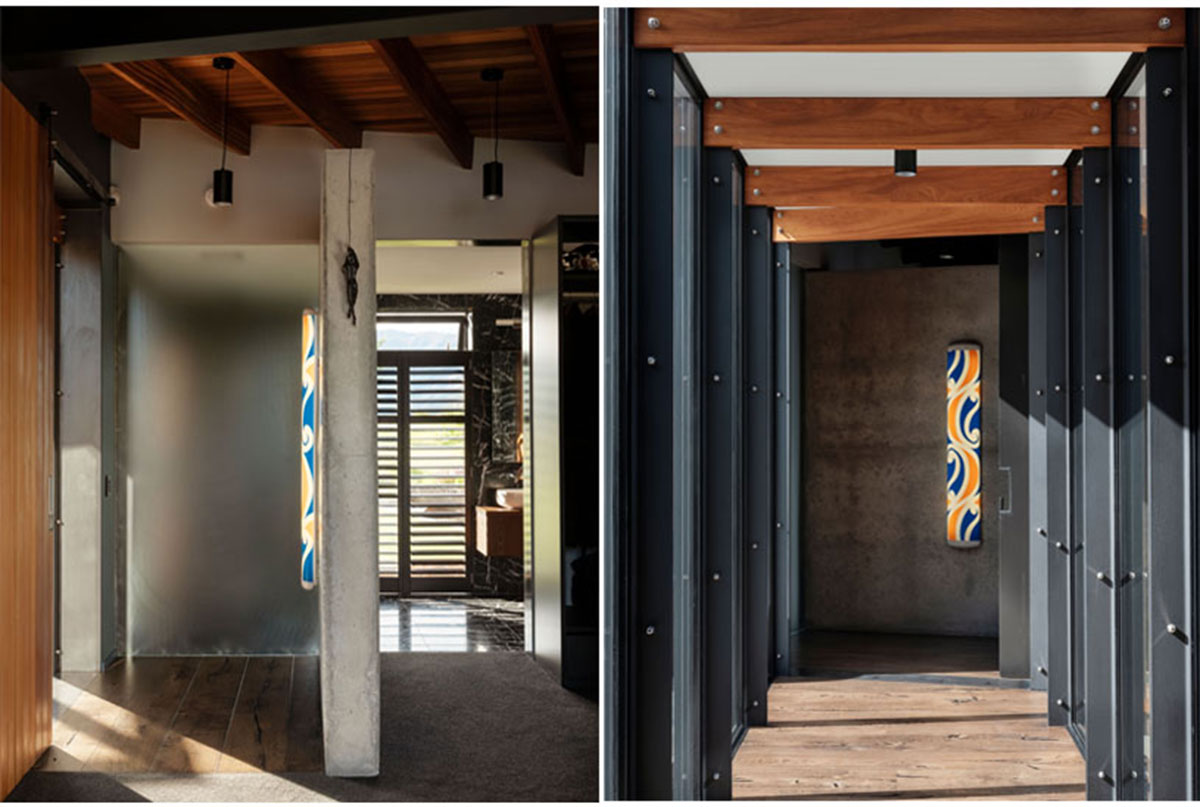
Natural materials are drawing on the local vernacular. Profiled metal cladding, corten and blackened steel, timber weatherboards and concrete, all referencing farm buildings seen throughout the Central Otago landscape. Natural stone and gravel from the area. Each pavilion has a distinct identity via the material selection, with common threads weaving throughout—utilitarian garage form clad in pre-finished profiled metal. Metal shutters over openings ensure this wing can be closed down. The main house is covered in cedar weatherboards providing a softer feel. Mai Mai is clad with corten steel, and a heavy concrete wall anchors the building into the landform at the edge of the pond.
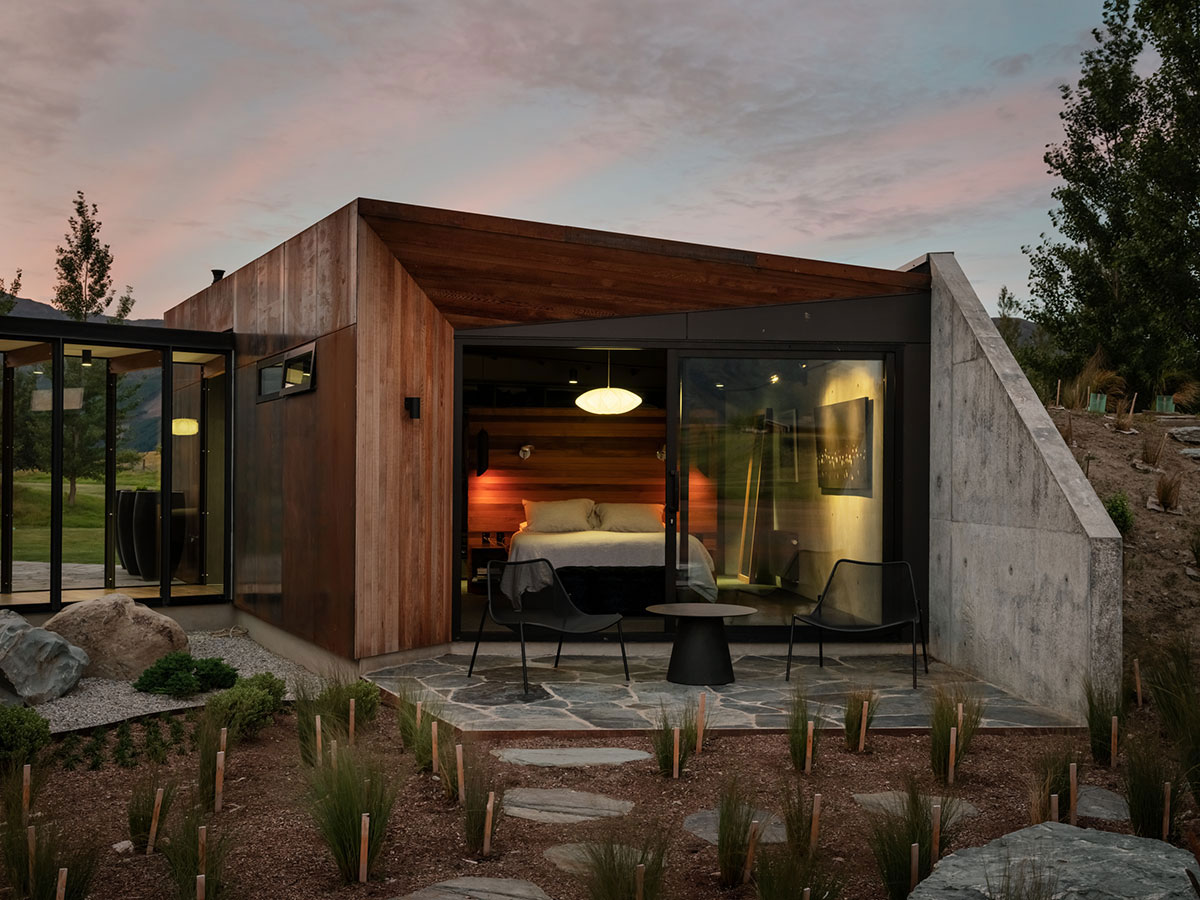
The design is not a glazed box in an extreme environment (hot and cold). Careful placement of windows ensures that each pavilion does not overheat or lose heat rapidly. House is separated into three distinct pavilions, so only the occupied wing is ‘switched on’. This also creates various outdoor living zones sheltered from sun and wind depending on the year—a healthy, accessible home. Accommodate the extreme climate through the building pavilion arrangement and size, height, and construction elements (insulation etc.). Simple rectangular pavilions allow natural light into each space.
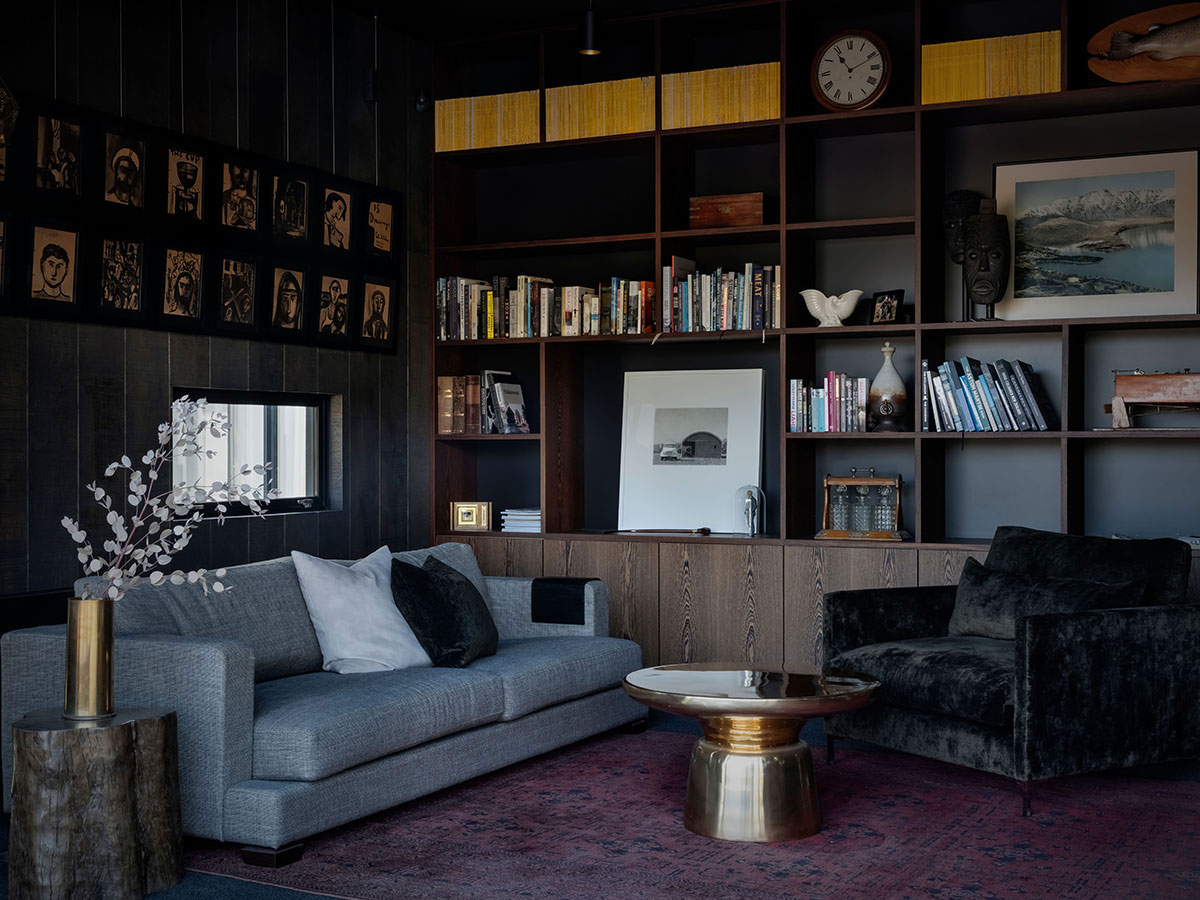

By breaking down the living functions into separate pavilions, only the areas that are being occupied are ‘switched on’. The off-set forms allow access to northern light whilst creating various outdoor living zones sheltered from the sun and wind depending on the time of year. Large roof overhangs to the west provide additional shelter and shade. Careful placement of openings ensures that each pavilion does not overheat or lose heat rapidly in the extreme environment while still allowing for passive ventilation. Durable material finishes reduce ongoing maintenance costs.
